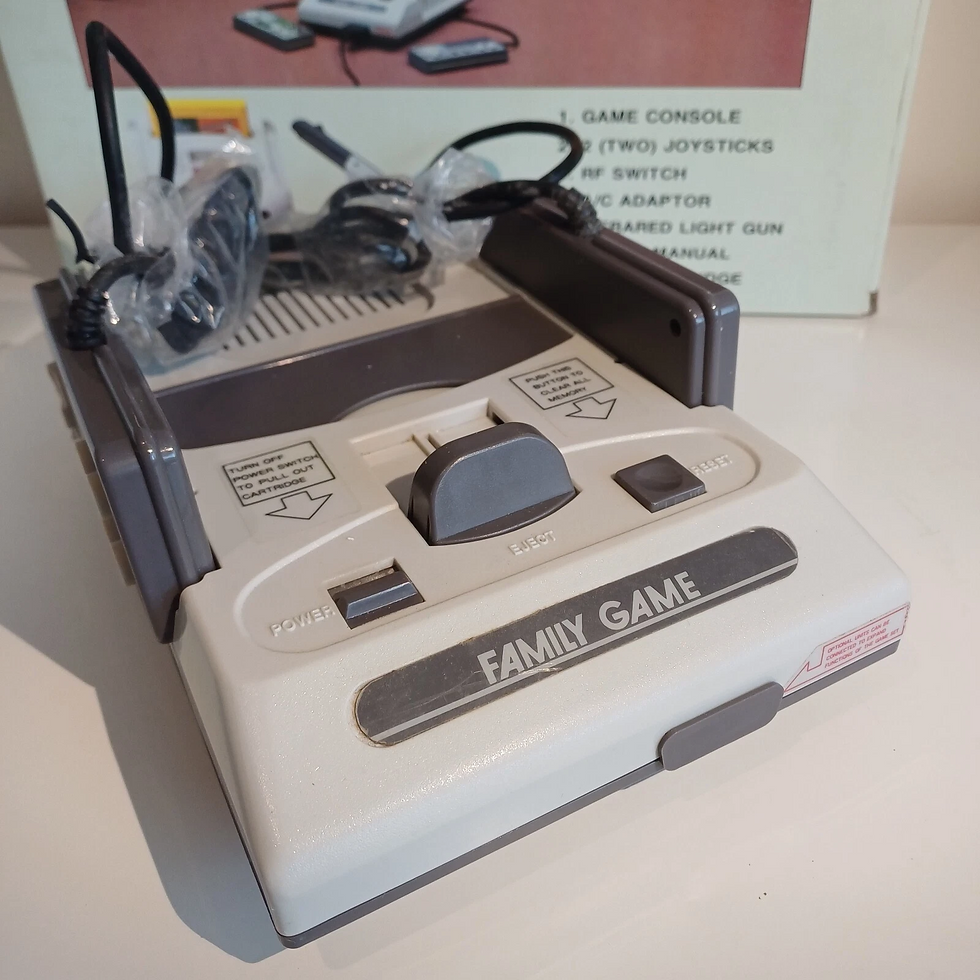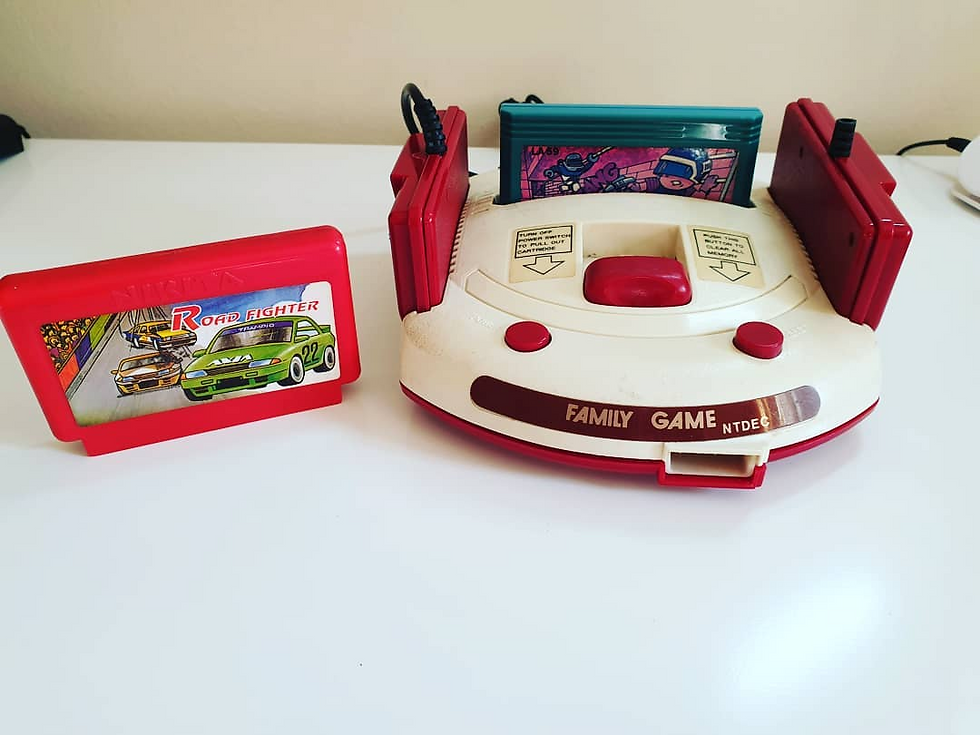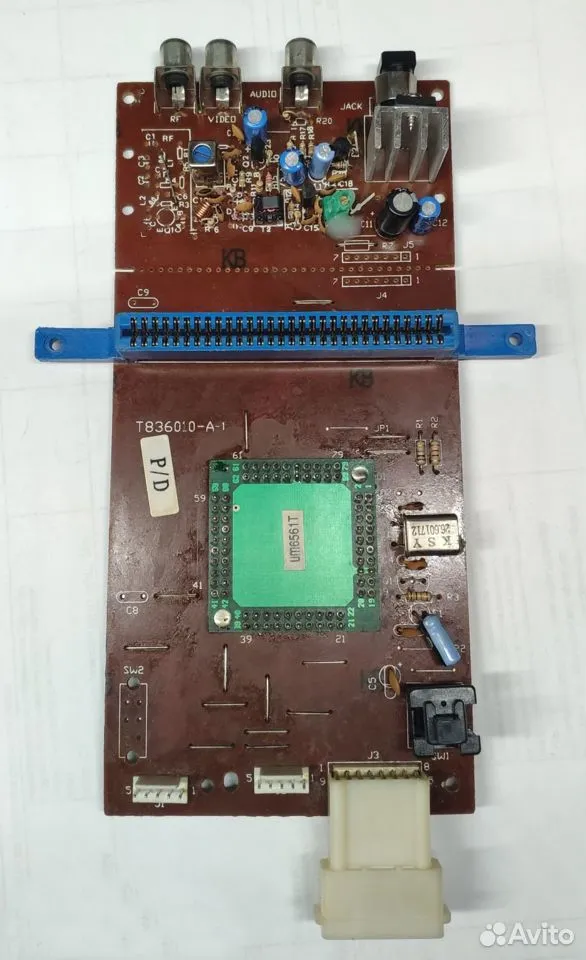Cut into the Number of Famiclones Ever Produced (Extra): Revisiting NTDEC from serial numbers
- hallyvorc
- 8月13日
- 読了時間: 3分
更新日:8月15日
Let me backtrack slightly to continue the topic of Nintendo Electronic (NTDEC), which I analyzed in the third article in this series. To make a more precise estimation, I thought it was necessary to collect serial numbers and actually tried to do so. Then, an unexpected conclusion came to light. The number of famiclones manufactured by this company eventually became the second largest in Taiwan.

The previous estimation was accurate, but...
NTDEC was a notorious pirate famiclone manufacturer that impersonated Nintendo. In my third article in this series, based on documents such as annual sales figures, I estimated that the company manufactured around 750,000 famiclones (as a lower bound estimate) by the time it ostensibly folded in 1994.
I found that the actual number of products based on serial numbers was in fact very close to this figure. Aggregating the serial numbers provided an estimate of around 800,000 units by 1994. Therefore, my method of estimation does not seem to be far off the mark.
However, problems arose after 1994. This time, I included the production quantity after 1994... and the quantity in this period was far greater than that produced before 1994!
The exceptional success
I was really surprised by this, because when it comes to the period after 1994, it was a time of decline for the Taiwanese famiclone industry. Major players such as TXC, Aaronix, Dar Yar Electronic and Bit Corp. were all clearly losing momentum at that time.
Since NTDEC was folded around this time, I assumed they would be no exception, but this was my big misunderstanding. While its major rivals were declining, NTDEC was the only Taiwanese company that continued to increase famiclone sales.
Strictly speaking, it was not NTDEC itself that increased sales after 1994, but rather its successor, ASDER Electronic Co., Ltd. (富威股份有限公司, later 亞斯德科技有限公司) which was established in 1993. My serial number statistics clearly show that the number of console sold increased rapidly during the ASDER era.
What made this quite exceptional "post-1994 production increase" possible?


Shift from cartridge to console
As I wrote in the third article in this series, NTDEC was dealt a devastating blow in 1993, that year when it lost a copyright infringement lawsuit filed by Nintendo. NTDEC was ostensibly folded, and restarted as ASDER. I believe this was when the company changed its business model.


The company's main source of income during the NTDEC era was not console hardware, but rather pirated and unlicensed game cartridges. However, during the ASDER era, no pirate or unlicensed game cartridges that can be clearly identified as having been manufactured by the company can be found, as far as I know, except those for the educational famiclones that I will describe later. In other words, the transition to the ASDER era provided an opportunity for the company to withdraw, or at least reduce their involvement in, the high-risk, cartridge-oriented business, and shift their focus to consoles.
Significant technological innovation also occurred in the famiclone industry by 1994. The 'NES-on-a-chip', a single, thumb-sized chip that could perform all Famicom functions, was adopted en masse, dramatically reducing console manufacturing costs. This may also have prompted ASDER’s business transformation. In fact, almost all of their famiclones started adopting the NES-on-a-chip around the time ASDER took over the business.
Next, let's look through the list of collected serial numbers to see which markets they were sold in, what was sold and how much of it.
The rest of this article is paid for.
To read more you have to be our patron here .


コメント